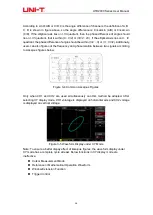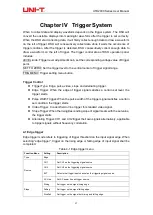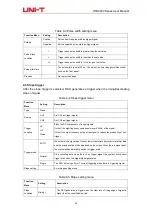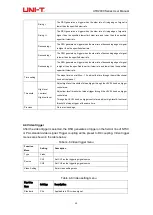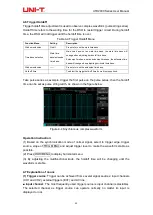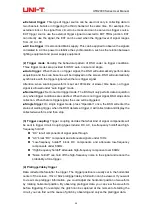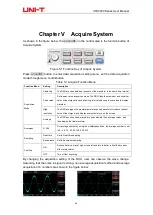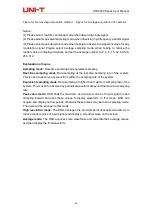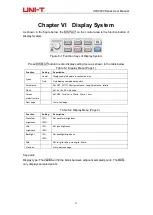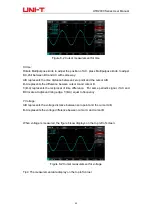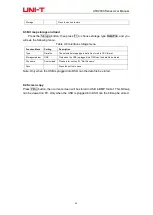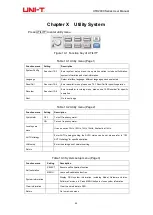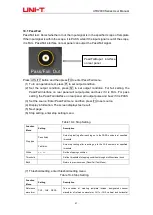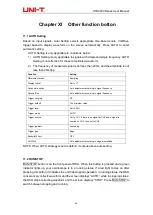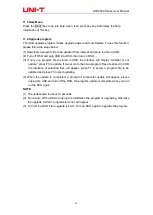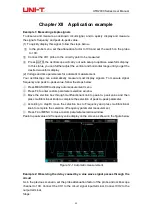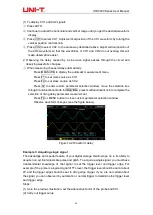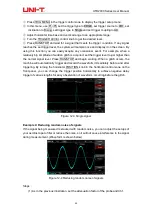
UTD2000 Series User Manual
40
Frequency (Freq): The reciprocal of the period
Rise time (Rise): The time for waveform amplitude to rise from 10% to 90%.
Fall time (Fall): The time for waveform amplitude to fall from 90% to 10%.
Rise delay: The time for main source and slave source to delay between two rising edges
Fall delay: The time for main source and slave source to delay between two falling edges.
Positive width (+Width): The positive pulse width at 50% amplitude.
Negative width (-Width): The negative pulse width at 50% amplitude.
FRFR: The time between the first rising edge of source 1 to the first rising edge of source
2.
FRFF: The time between the first rising edge of source 1 to the first falling edge of source
2.
FFFR: The time between the the first falling edge of source 2 to the first rising edge of
source 2.
FFFF: The time between the first falling edge of source 1 to the first falling edge of source
2.
FRLF: The time between the first rising edge of source 1 to the last falling edge of source
2.
FRLR: The time between the first rising edge of source 1 to the last rising edge of source
2.
FFLR: The time between the first falling edge of source 1 to the last rising edge of source
2.
FFLF: The time between the first falling edge of source 1 to the last falling edge of source
2.
7.4 Other parameters
Positive duty (+Duty): The ratio of positive pulse width and period.
Negative duty (-Duty): The ratio of negative pulse width and period.
Over shoot (OverSht): The ratio of “Difference between max value and high value” and
“Amplitude value”.
Preshoot (PreSht): The ratio of “Difference between min value and low value” and
“Amplitude value”.
Area: The algebraic sum of the product of voltage and time for all dots on the screen.
Cycle Area: The algebraic sum of the product of voltage and time for all dots in one cycle.
Phase: The phase difference of main source and slave source.

